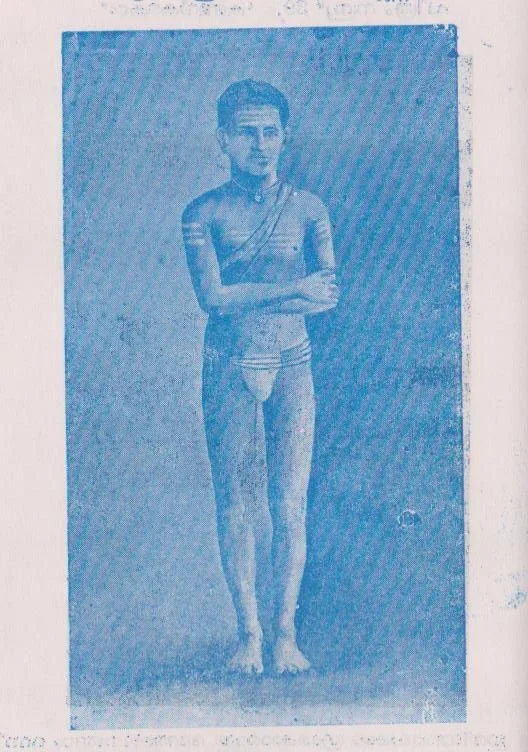Dear Renuka,
very nice reply,informative too.. no kidding, no wounding words like the others, I really like the way you replied.
Having seen your link, I understood that kaupeenam and komanam are same,it is different from panchakacham.
Would like to practice the same.
Infact brahmacharyam demands that ? I heard so, any traditional praciticing friends available, may i get a link including sandya vandanam and other practices, would love that now a days, fond of wearing komanam.
Once again thankyou for your kind informative reply.
Karthik
Dear Karthik,
I do not know much about this and when I joined Forum I used to wonder what is this Kaupeenam etc.
At times I used to think that it sounded like a shield of some nether region and my guess was almost right...it is the Indian G string.
And in 2011 my cousin and I had the "bhagyam" of seeing a priest in his Kaupeenam when my cousin accidentally open the door of one of the rooms at the back of the temple when were were looking for the bridal dressing room and Lo Behold! it was the priests room which she opened and there he stood in all glory! poor guy must have got a scare and we ran away after apologizing.
Look up this blog...write up and a pic of Kaupeenam too.
For your query of Pancha Kachcham..check out this link:
Dear Shri Karthik,
I get an impression that you are, perhaps, not even a brahmin and are trying to gauge the knowledge of the members here about brahmacharyam, koupeenam, panchakaccham, etc., or, you have been brought up in a very non-tabra way. Whatever that be, I am trying to answer your doubts to the best of my (a 70+ tamil brahmin, male) ability and knowledge.
As you have now understood (realized), kOmaNam and koupeenam are one and the same; the former is the Tamil word used by most Tamil castes while the latter is its Sanskrit equivalent.
The sanskrit word "Brahmacharyam" has three main meanings; one, it denotes celibacy of a male, and two, it goes a step further and signifies the mindset of a person - including married persons, widowers, and may be even women of all ages and married statuses - which is fixed constantly, without wavering, in trying to know about the ultimate truth or Brahman, and lastly, the period in the life of a male between his upanayanam till he completes his study of veda/s to the satisfaction of his guru or veda teacher.
kOmaNam or koupeenam is neither mandatory nor helpful for any person - male or female - in any of the three objectives; rather, a simple kOmaNam may be the easiest thing to undress and may be engage in sexual activity like intercourse or masturbation! But, according to our ancient hindu customs and practices, a brahmachari (i.e., one who has his upanayanam ceremony done.) was required to wear only a kOmaNam till he completed his study of veda/s to the satisfaction of his guru or veda teacher, at which time a rite/ceremony called "samAvartanam" was to be performed and thereafter the fellow could wear a cloth or vEShTi. The attached image shows a Nambudiri Brahmachari (in the early 1900's) and those people could successfully follow this kOmaNam system for all their boys, teach veda by rote to each one of them and then perform samAvartanam also as envisaged by our ancient scriptures.
Panchakaccham means the hem of the veshTi made into five pleats (no more, no less - but the width of the pleat can vary) and worn in the fashion shown in the video. Again, this is / was only a social fashion and this was mandatory for a brahmin to do anything vedic, including recitation of the vedas (which includes puruShasUktam, rudram, chamakam, and so on) but, this may not be particularly helpful in preserving one's celibacy or in one's thoughts getting converged on the "ultimate Truth".
Today, we are living in times when women recite vedas even during their menstrual periods and, in some places, they even officiate as priestesses.
Hence it is for you to decide about kOmaNam, panchakaccham, etc., as also what meaning of brahmacharyam appeals to you.

